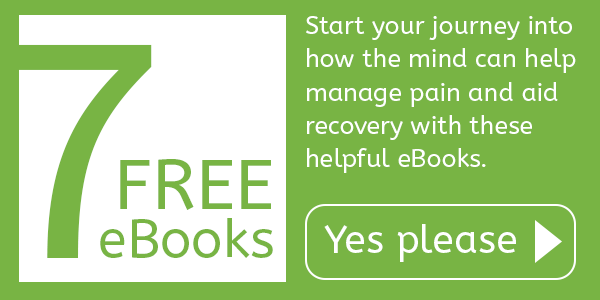There was a dark irony to Michael Moskowitz’s injury: A leading Bay Area pain specialist, who had fixed hundreds of patients in his decades-long career, could not fix himself. In 1994, at age 45, Moskowitz injured his neck in a waterskiing accident, leading to chronic, debilitating pain. He tried everything: rehab, rest, drugs. Nothing worked. Then he tapped into his brain.
At long last, science is unlocking ways to use our minds to heal our physical ailments, including pain. And not just chronic pain, all pain—including the burn of a marathon or a brutal spin class.
The breakthroughs stem from the concept of neuroplasticity, which supposes that the brain is malleable—and that injuries to the body can actually change the brain’s molecular structure. Over time, the theory goes, pain signals sent from your torn-up runner’s knee (or Moskowitz’s neck) rewire the brain to overwhelm its memory, sound, and pleasure centers—basically the fun parts. Moskowitz realized he could untangle this bad wiring to cut out the pain and recapture his original brain functions.
This is what he did, and how you can do likewise.
Visualize a pain-free brain. Moskowitz looked at images of his brain’s pain center firing. Then he imagined that pain signal shutting off. He did this over and over again. He also forced himself to concentrate on mental tasks—reading, writing, working—powering through no matter how distracting the pain. Eventually his brain rewired itself to focus on the tasks and shut out the pain signals. In a few months, his pain diminished. In two years, it was gone.
Listen to Dr. Feelgood. Using Tibetan singing bowls, Moskowitz recorded what he calls “brain music,” which replicates the natural rhythms of a pain-free brain at rest, and played the recordings for his patients. Search “Neuroplastix Default Mode Network” on SoundCloud to hear for yourself. It sounds kinda like Brian Eno.
Talk to your brain. Literally. The idea is to have your conscious brain take over from your unconscious brain. Whenever patients experience pain, Moskowitz has them repeat phrases like There’s no danger and Shut off the pain. Over time, he has retrained his patients’ brains, too.
Moskowitz’s message: You don’t have to hurt. “Our goal is not pain management,” he says. “Our goal is really pain treatment to the point of cure. We want to get rid of the disease of pain.”
Embrace The Power of Negative ThinkingFear, insecurity, and anger can fuel your peak performance
“I feed off what people say a lot. If somebody’s talking trash to me or saying something about me in a negative way, I use that as motivation. Doesn’t matter if they said it a year ago, two years ago, five years ago. I remember everything that they said about me. And that helps get me out of bed in the morning.” — Michael Phelps, 22-time Olympic medalist
This article was orginally posted to www.gq.com
If you like this post you will also enjoy:
- Power of Hope and Prayer In Improving Toothache Pain.
- How Mental Imagery Manages Pain.
- The Buddhist Monk Who Controlled Pain and Suffering.
- Virtual Reality Helps Distract Kids from Painful Medical Procedures.






